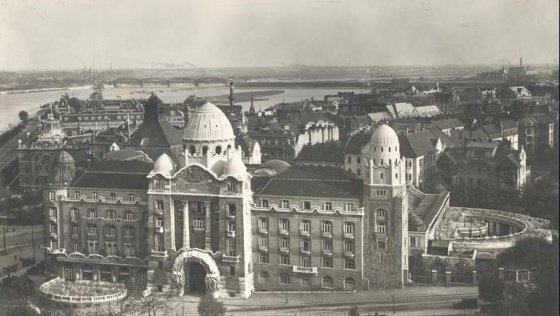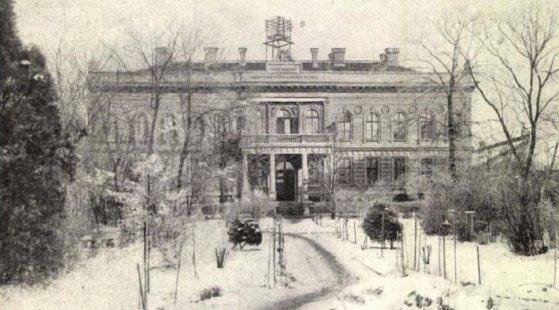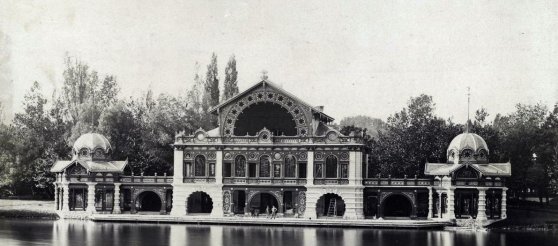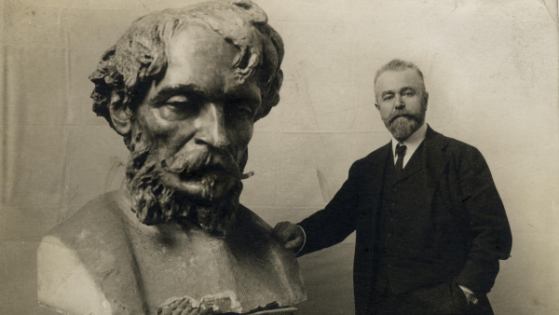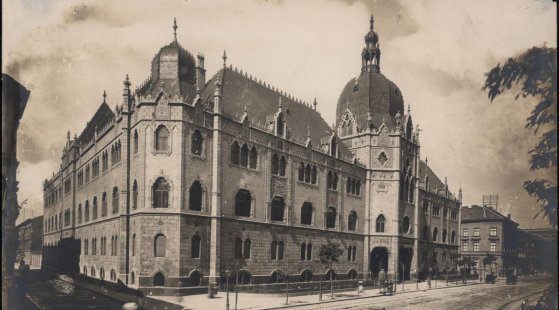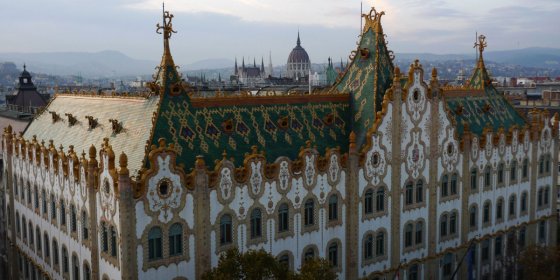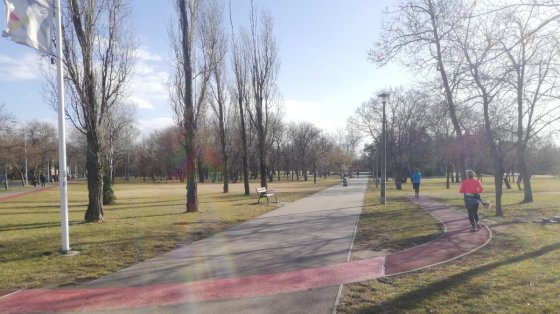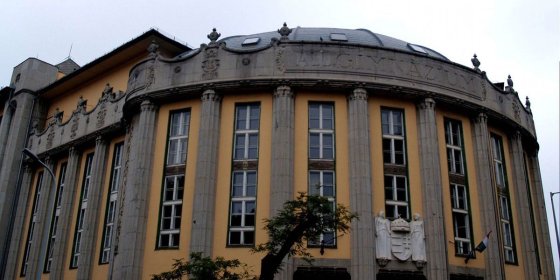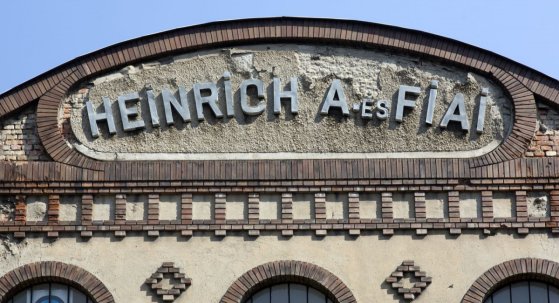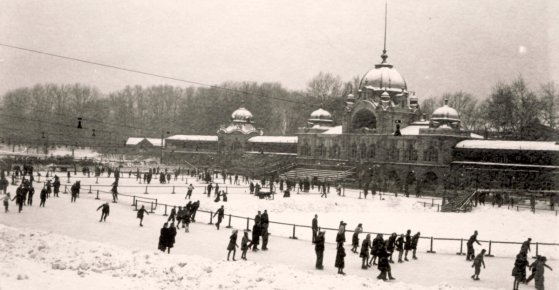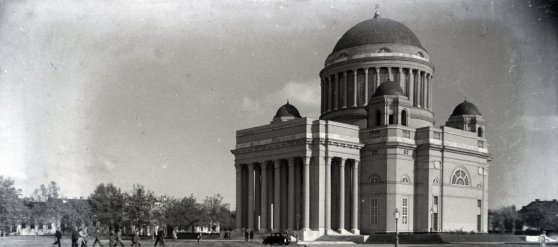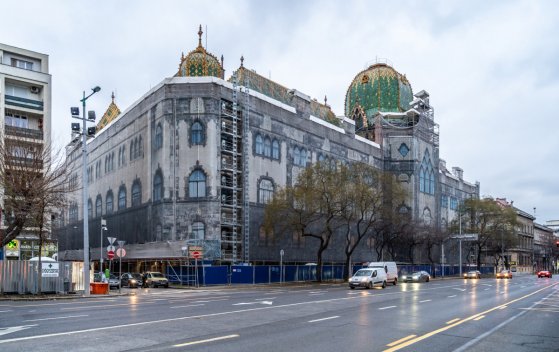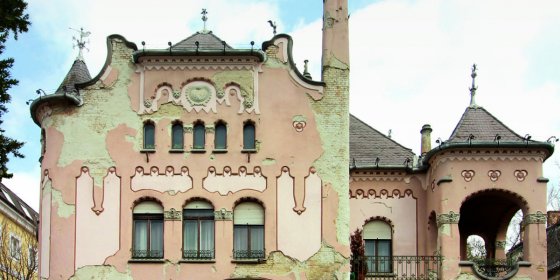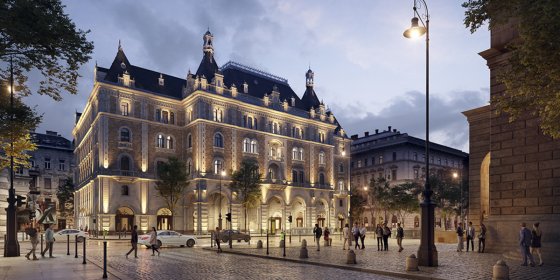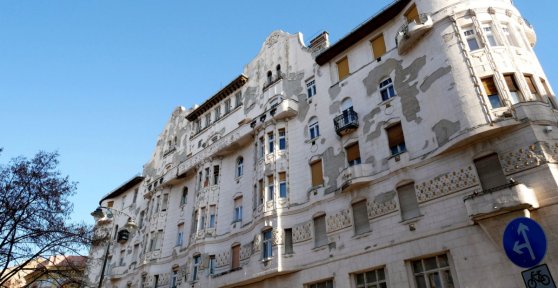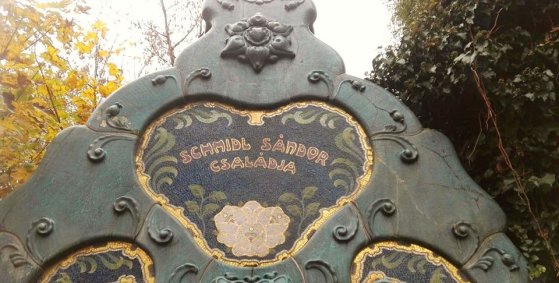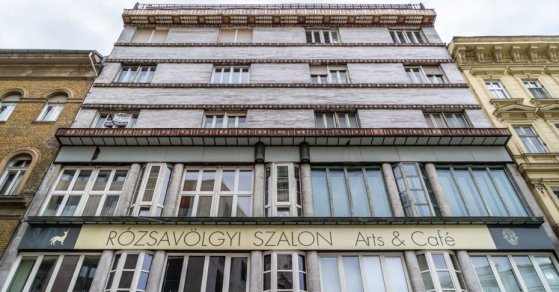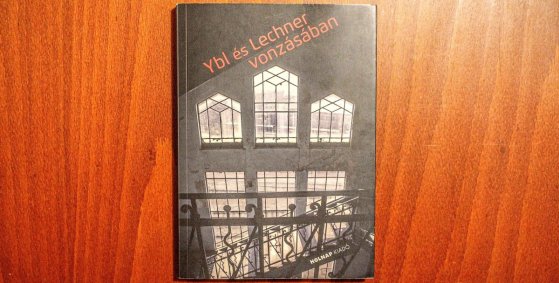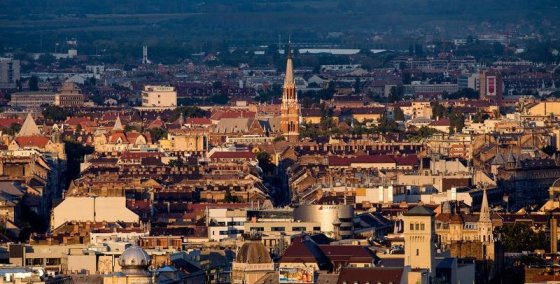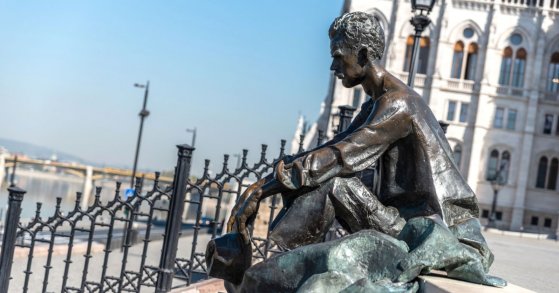 The „intertwined history” of the bridges and the city of Budapest
Which ideas and events have shaped the fate of bridges of Budapest and the cityscape? Alongside many other interesting facts, this question is also answered this newly published book by the Budapest City Archives, which introduces the history of bridges in Budapest.
The „intertwined history” of the bridges and the city of Budapest
Which ideas and events have shaped the fate of bridges of Budapest and the cityscape? Alongside many other interesting facts, this question is also answered this newly published book by the Budapest City Archives, which introduces the history of bridges in Budapest.
Ödön Lechner
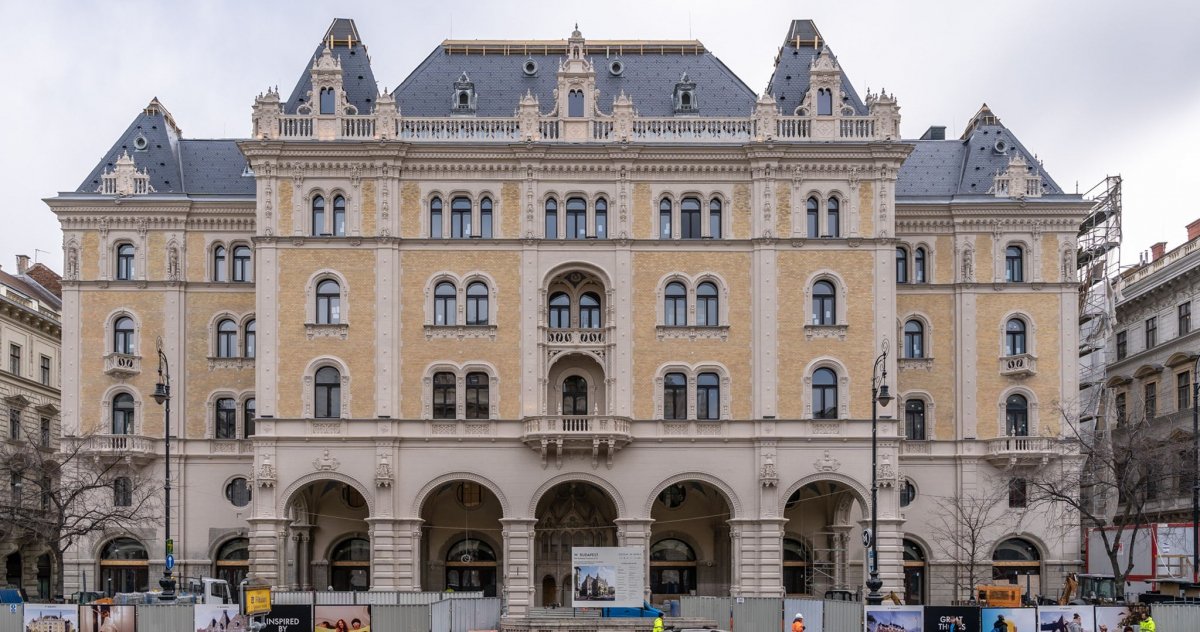 The facade of the Drechsler Palace, which is under renovation, can already be seen
The facade of the Drechsler Palace, which is under renovation, can already be seen
March 13, 2023 at 11:00 AM
The building at 25 Andrássy Avenue, the former Ballet Institute, known as the Drechsler Palace, was built for the Pension Fund of the Royal Hungarian State Railways according to the plans of Ödön Lechner and Gyula Pártos. The building is being converted into a five-star hotel, its facade is already visible. Pestbuda now presents some pictures of the building.
Who became a fan of Art Nouveau: the architectural legacy of Artúr Sebestyén, born 155 years ago
January 18, 2023 at 4:00 PM
Artúr Sebestyén, born 155 years ago today, was one of the important architects of the turn of the century. After graduating from the University of Technology, he worked in Alajos Hauszmann's office, his architectural work was initially defined by Neo-Baroque forms, then he increasingly turned his attention to Hungarian motifs. He designed many buildings in the capital, in the countryside and beyond the borders. His best-known work is the unmissable Art Nouveau creation, the Gellért Hotel and Thermal Bath.
An exhibition was opened on the 150th anniversary of the construction of the Honvédmenház
October 17, 2022 at 7:30 PM
150 years ago, in the fall of 1872, on Soroksári Road in the 9th District, the nursing home built for the elderly disabled and destitute soldiers who took part in the 1848-49 revolution and war of independence was opened. Its task was to provide and care for veteran soldiers. The last veteran died in the building, designed by Ödön Lechner and Gyula Pártos, in 1928. An exhibition about the regiment of Lajos Kossuth has just opened in the Ferencváros Local History Collection.
The first efforts of a genius - Ödön Lechner's early buildings
September 4, 2022 at 11:00 AM
Ödön Lechner became really famous for the Hungarian architectural design language, which he began to use from the last decade of the 19th century. However, his career as a designer started much earlier, at the very beginning of the 1870s, and he had a nice upward curve: one hundred and fifty years ago, several buildings were realized at the same time according to his ideas, although not yet in the style that would later become characteristic. We present some of them below.
Throughout the city, you can admire the statues of György Zala, who died 85 years ago
August 1, 2022 at 11:30 AM
György Zala owes the central sculpture group of the Millennium Monument on Hősök Square with the Archangel Gabriel to György Zala, as well as the original Andrássy and István Tisza statues in Kossuth Square, or the dignified seated statue of Queen Elizabeth in today's Döbrentei Square. Zala was one of the busiest sculptors of his time, and his legacy has an architectural aspect: his villa in Pest was designed by none other than the master of Art Nouveau, Ödön Lechner.
The glass hall of the Museum of Applied Arts is open again - you can see the never-before-seen art treasures of the Esterházy family
July 23, 2022 at 12:30 PM
The Museum of Applied Arts, which has been closed for renovations since 2017, has temporarily opened its doors. The glass hall and ground floor gallery of the building designed by Ödön Lechner and handed over in 1896 at the end of the millennium celebrations can be visited, where you can see a special selection of the war-damaged and never exhibited art treasures of the ducal treasury of Esterházy.
Bees on the roof - The inner hall of the Postal Savings Bank is being renovated
April 25, 2022 at 9:00 AM
In the vicinity of Szabadság Square, the Postatakarékpénztár [Postal Savings Bank], which was built at the turn of the century, has been being renovated for months. In addition to Ödön Lechner's main work, three other works by the master are also being restored: the Museum of Applied Arts, the Balás Sipeki Villa next to the Városliget and the Drechsler Palace on Andrássy Avenue. While the latter are undergoing a larger-scale change visible from the outside, in the case of the Postal Savings Bank, its internal box office will get back its original dome. Once upon a time, this was also characterized by an imaginative ornamentation similar to the façade, but it was remodelled over time according to the needs of its use, but it was not spared by the storms of history.
Kőbánya can also cause surprises
February 26, 2022 at 10:00 AM
Kőbánya is one of the most deplorable districts in Budapest. Lately, unfortunately, this part of the city has entered the national press in connection with more internet memes or crimes. However, PestBuda undertook to explore the green parks of the 10th District, prepared for the worst. Our journalists were very pleasantly surprised in most places. The street scene, public safety has improved a lot lately in the areas they have explored. Take a look at the pleasant surprises.
The Swan Song - Ödön Lechner's last building
February 17, 2022 at 10:00 AM
In recent days, the Szent László Grammar School in Kőbánya has appeared frequently in the media. Although it was only visible as the background of the events, the viewers may have noticed the special facade of the building and its unique decorative elements - this is explained by the fact that it was the last work of Ödön Lechner (the genius who created the Hungarian architectural form), and it was finished in the year of the master's death, in 1914.
Two Faces of a Building - The Heinrich Courtyard in Józsefváros
January 26, 2022 at 10:30 AM
On the opposite side of Üllői Road, opposite the Museum of Applied Arts, stands a neo-baroque tenement house, built by the iron merchant Ferenc Heinrich. Not far from it, and in the neighbouring Mária Street, lies the long facade of an Art Nouveau warehouse. One would not even think that the two had anything to do with each other, however, both were built by the Heinrich iron merchant family. The latter was completed by 1912, meaning it could begin to be filled with goods a hundred and ten years ago.
There has been artificial ice on the City Park Ice Rink for 95 years
November 20, 2021 at 5:00 PM
95 years ago today, on 20 November 1926, the mechanically cooled skating rink in City Park was handed over. Thanks to the artificial ice, the season has been extended, allowing ice skating even when the temperature does not drop below zero degrees. The one in City Park was the first artificial ice surface in the country and the second in Europe.
One of the largest churches in Budapest was consecrated ninety years ago
October 8, 2021 at 9:00 AM
The Church of Our Lady of Hungary in Rezső Square, consecrated on 8 October 1931, became the second largest church in the capital after St. Stephen's Basilica. Although it has since been toppled from this eminent place, it is still at the forefront to this day. However, not only is its size commanding authority, but also the long and tacit history of its construction.
The long-awaited reconstruction of the Museum of Applied Arts can begin
August 16, 2021 at 6:00 PM
During the works, the decorations of the beautiful Art Nouveau palace designed by Ödön Lechner will be restored inside and out, the foundation of the building will be strengthened, several internal partitions and courtyard annexes will be demolished, as well as the museum's 21-meter-high chimney.
The Saint Emeric Dormitory in Pest not only provided housing but also raised students
July 28, 2021 at 11:30 AM
At the turn of the century, Saint Emeric's Dormitory was established on a private initiative to alleviate the housing problems of Catholic students and college students, which later developed into a national network. The dormitory operated first in Irányi Street and then on Üllői Road. The Saint Emeric Dormitory in Pest finally found a permanent home under 43-45 Ráday Street in Ferencváros. The renowned dorm suffered from the period of the Hungarian Soviet Republic, but its nearly half-century-old history ended with the turn of the post-World War II era. The building still houses a dormitory.
Sipeki Balás Villa to be restored on Hermina Road
March 21, 2021 at 2:00 PM
The Art Nouveau Sipeki Balás Villa, built between 1905 and 1907, currently the headquarters of the Hungarian National Association of the Blind and Visually Impaired, is to be fully restored. The listed building, designed by Ödön Lechner, will be renovated under supervision for HUF 1.94 billion. The wing attached to it in the 1970s will be demolished and replaced with a new wing.
Hotel to open in Drechsler Palace – Ödön Lechner's masterpiece reborn
March 4, 2021 at 4:00 PM
Standing opposite the Opera House, at 25 Andrássy Avenue, the French Renaissance-style Drechsler Palace is to be renovated as a five-star hotel. The remodelling of the building, designed by Ödön Lechner and Gyula Pártos, will include a loft conversion. The owners have promised that the listed historical monument will be restored to its former glory.
The future of Gutenberg – Construction of printers' headquarters began 115 years ago
January 25, 2021 at 9:00 AM
The construction of a masterpiece of Hungarian Art Nouveau architecture, Gutenberg House, began in 1906. The residential building that served cultural purposes for several decades is still unique, despite losing much of its charm over the last few years. The sculptures and murals that adorned its facade were destroyed almost 50 years ago, this stunning building would deserve to be restored to its original condition.
Tradition and Modernity: The sacred art of Béla Lajta
November 26, 2020 at 10:00 AM
In a recent article, PestBuda honoured the memory of Béla Lajta. One of the leading Hungarian architects of the early 20th century, Lajta played a definitive role in the formation of Budapest in the period. Continuing a series in honour of the centenary of his death, join us on a tour of his sacred art in the Jewish cemeteries of Salgótarjáni Street and Kozma Street.
A forerunner of modern Hungarian architecture – Remembering Béla Lajta
October 28, 2020 at 9:00 AM
Lajta Béla was one of the most influential Hungarian architects of the first decades of the 20th century. Starting in the footsteps of Ödön Lechner, his art nouveau style grew into a new form and became a forerunner of Hungarian modern architecture. He represented a new approach to the formation of mass while retaining folk-based decorations and the ornamentation of art nouveau, and he connected it to new materials and designed buildings which were monumental in their simplicity. Buildings that have remained beautiful examples of modern urban architecture to the present day.
Defined by Ybl and Lechner
October 15, 2020 at 6:00 PM
When asked to name Hungarian architects, most people will likely mention Miklós Ybl and Ödön Lechner. This is no coincidence; the two architects were prolific and important artists is their age. But how much do people know about their time and their contemporaries? The new volume Ylb és Lechner vonzásában provides information on these.
Zugló turns 85 – A district of palaces, villas and housing estates
October 9, 2020 at 3:00 PM
Established ninety years ago, Zugló became an independent district 85 years ago. The 14th District connects the city centre with the outer parts of the city, and its role is reflected in its architecture. Beautiful villas built by artists stand alongside stunning school buildings, monuments and the headquarters of various institutions in the styles of historicism and Art Nouveau and these were joined in the 1970s by housing estates.
Poetry Day Walk - Statues of the greatest Hungarian poets in Budapest
April 11, 2020 at 10:00 PM
On this year's National Poetry Day, 11 April - the birthday of Attila József - the public, community poem readings, which have already become a tradition, were cancelled, and we could not even visit the statues of the greatest Hungarian poets to show our respect and gratitude. Thus, Pestbuda offers only a virtual walk between the works depicting our national greats in Budapest.
More articles
 The „intertwined history” of the bridges and the city of Budapest
Which ideas and events have shaped the fate of bridges of Budapest and the cityscape? Alongside many other interesting facts, this question is also answered this newly published book by the Budapest City Archives, which introduces the history of bridges in Budapest.
The „intertwined history” of the bridges and the city of Budapest
Which ideas and events have shaped the fate of bridges of Budapest and the cityscape? Alongside many other interesting facts, this question is also answered this newly published book by the Budapest City Archives, which introduces the history of bridges in Budapest.
 The Bridge Report, which brought a turning point in the history of Budapest
A travel report that changed the history of Pest and Buda, as well as Hungary. The little book contributed to the change of half a thousand years of legal customs and the implementation of an investment of unprecedented size and technical quality. This book was The Bridge Report [Hídjelentés in Hungarian].
The Bridge Report, which brought a turning point in the history of Budapest
A travel report that changed the history of Pest and Buda, as well as Hungary. The little book contributed to the change of half a thousand years of legal customs and the implementation of an investment of unprecedented size and technical quality. This book was The Bridge Report [Hídjelentés in Hungarian].
 Drama on the university wall - The heroic monument was planned 95 years ago
In the constant hustle and bustle of the Egyetem Square in Pest, the students may not even notice the monument that decorates the short section of wall between the church and the central building of ELTE. However, it commemorates their predecessors, the heroes who fought for their country in World War I, and those who heroically helped them. The first design of the dramatically collapsing soldier was born in 1928, ninety-five years ago.
Drama on the university wall - The heroic monument was planned 95 years ago
In the constant hustle and bustle of the Egyetem Square in Pest, the students may not even notice the monument that decorates the short section of wall between the church and the central building of ELTE. However, it commemorates their predecessors, the heroes who fought for their country in World War I, and those who heroically helped them. The first design of the dramatically collapsing soldier was born in 1928, ninety-five years ago.

